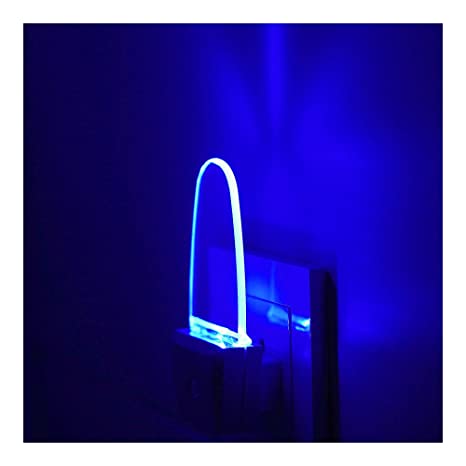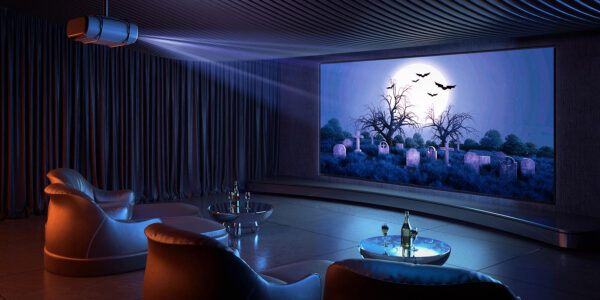Most people have an innate understanding of how LED lighting improves mood and health, as it can affect the overall mood of an environment. They install dimmer switches in dining rooms and other parts of their homes to set a warmer feel when lights are dimmed. In the dark days of winter in northern climates, therapists will even recommend special full-spectrum lighting to help alleviate symptoms of Seasonal Affective Disorder. Modern LED lighting systems are now taking this relationship between light and mood to its next level. LED lighting engineers are experimenting daily with uses of LED lighting that directly improve mood and physical health with advanced optics and color temperature variance.
How LED Lighting Improves Mood and Health
Lighting has a profound impact on our mood, well-being, and overall health. Traditional lighting options often fall short in creating an optimal lighting environment. However, LED (Light Emitting Diode) lighting has emerged as a transformative solution, offering numerous benefits that positively influence our mood and health. Let’s delve into how LED lighting can brighten our lives by improving our well-being.
- Natural-Like Lighting:
LED lights can mimic the natural spectrum of daylight, creating a more balanced and pleasant lighting experience. By providing a range of color temperatures, from warm white to cool white, LED lights can emulate natural light, which has been shown to uplift mood, increase alertness, and enhance productivity during the day. This natural-like lighting can help regulate our internal body clock, promoting healthier sleep patterns and overall well-being.
- Circadian Rhythm Regulation:
Our bodies are naturally attuned to the cycles of day and night, known as our circadian rhythm. LED lights can be designed to support this rhythm by adjusting their color temperature throughout the day. Brighter and cooler light during the daytime can boost energy levels and focus, while warmer and dimmer light in the evening can promote relaxation and prepare the body for restful sleep. By aligning LED lighting with our natural sleep-wake cycle, we can improve mood regulation and enhance overall wellness.
- Reduced Eye Strain and Fatigue:
LED lights produce steady and flicker-free illumination, reducing eye strain and fatigue associated with traditional lighting technologies. Flickering lights can cause discomfort, headaches, and difficulty concentrating. LED lights offer a stable and consistent light output, minimizing eye strain and providing a more comfortable visual experience. Additionally, LED lights can be equipped with proper diffusers and optics to reduce glare, further enhancing visual comfort and reducing eye fatigue.
- Enhanced Color Rendering:
LED lights have excellent color rendering capabilities, accurately representing colors as they appear in natural light. This is particularly important in environments where color perception is critical, such as art galleries, retail spaces, and healthcare settings. LED lighting with high color rendering index (CRI) values ensures that colors appear vibrant and true to life, positively influencing our mood and enhancing our perception of the surrounding space.
- Personalization and Control:
LED lighting offers flexibility in personalizing our lighting experience. With the integration of smart lighting systems, LED lights can be controlled and adjusted to meet individual preferences and specific lighting needs. Dimming options, color-changing capabilities, and programmable lighting scenes enable us to create the desired ambiance for various activities and moods. By having control over our lighting environment, we can optimize our surroundings to support relaxation, focus, or productivity as desired.
- Energy Efficiency and Sustainability:
LED lighting not only enhances our mood and health but also contributes to energy efficiency and sustainability. LED lights consume significantly less energy compared to traditional lighting options, leading to reduced electricity usage and lower utility bills. The long lifespan of LED lights reduces the frequency of replacements, minimizing waste generation and the environmental impact of lighting systems. By embracing LED lighting, we can prioritize both our well-being and the planet’s sustainability.
LED lighting goes beyond providing illumination; it has the power to positively impact our mood, well-being, and health. With their ability to replicate natural light, regulate our circadian rhythm, reduce eye strain, enhance color rendering, offer lighting personalization, and promote energy efficiency, LED lights create an environment conducive to a brighter and healthier life. By choosing LED lighting solutions, we can uplift our mood, improve productivity, and nurture a greater sense of well-being in our daily lives.
Lighting for Human Life
LED lighting is uniquely suited to uses in the burgeoning field of human-centric because of the high level of control that these systems offer to operators. LED lighting systems can be configured with rapid on-off switching and different lighting wavelengths, colors, and lighting temperatures can be combined and controlled with pinpoint accuracy to create an almost infinite variety of lighting configurations. The control systems for LED lighting provide maximum flexibility with easy and efficient setup or reconfiguration when needed.
One specific example of the advantages of LED lighting in this field is in its use to generate lighting wavelengths that can increase awareness and productivity. Scientists who study biofeedback have long known that human eyes are particularly susceptible to blue light. This knowledge has led to recommendations that individuals who have trouble falling asleep should avoid light sources that might be high in blue light, including smartphones and computer tablets.
Light sources that are high in blue light will suppress an individual’s melatonin production, a hormone that facilitates sleep. So to help individuals wake up from a period of sleep, LED lighting can be configured to increase blue light wavelengths. Conversely, when individuals are trying to get to sleep, LED sources that have relatively lower blue light wavelengths will help to create a more relaxing environment conducive to natural circadian rhythms. NASA scientists have relied on this light- and sleep-interaction to change ambient lighting on missions in order to help astronauts get better sleep in space. These are just some of the ways LED lighting improves mood and health.
Healthcare Research
Healthcare researchers are also using LED lighting systems to treat depression and other psychological disorders. In addition to suppressing the sleep-inducing melatonin hormone, certain light wavelengths can increase an individual’s serotonin levels. Pharmaceutical treatments for depression typically include a form of selective serotonin uptake reinhibitors (“SSRI’s”), which combat depression by preventing an individual’s body from metabolizing serotonin. At least one study has concluded that exposing individuals who suffer from depression to certain light sources is as effective in maintaining and improving serotonin levels as those prescription medications, which is a big revelation in the mental health field where pharmaceutical medication has been the go-to solution for years.
LED lighting engineers are on the cutting edge of producing lighting systems to directly improve an individual’s mood and health, which goes beyond the more traditional role of lighting that sought only to set the mood of a whole room. A simple retrofit of your existing lighting infrastructure with specification-grade, high-performance LED luminaires can change your performance environment even today.







